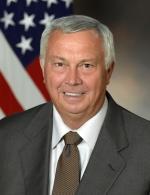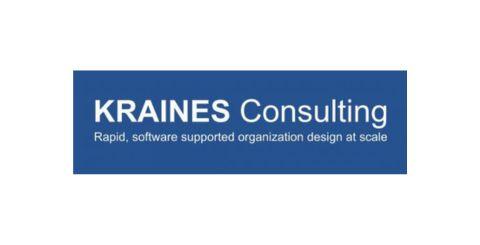Levels of Work and Complexity in Military Organizations
- Complexity is getting more capable, et cetera. Same phenomena is happening in industry. We've pushed complexity down because you're in a global environment. Industry is going global, and so their complexity also is being pushed up.
- Smaller seems to be more adaptive, more agile, more flexible. When business units came in, then the marketplace went global. And so you could begin to see the business unit get smaller in terms of competing. Now you're going to see level four or five business units or 16.
Speaker A But my sense of company, the complexity that comes there is from understanding the training cycle to achieve combat readiness and then assessing combat readiness of the unit and bringing it ...
Transcript of the presentation video
NOTE: This transcript of the video was created by AI to enable Google's crawlers to search the video content. It may be expected to be only 96% accurate.
Speaker A But my sense of company, the complexity that comes there is from understanding the training cycle to achieve combat readiness and then assessing combat readiness of the unit and bringing it up to Snuff. The actual management of the company in combat is a matter of coordinating the movement of platoons and actually, in my day, calling in artillery. Okay, so there's a little bit of management of external resources and hands on contact with the folks who are being led at battalion level.
Speaker B Wait a minute. And this is the company, and all of you have seen this famous this is about 100 to 200 people. Ideally, it should be 60.
Speaker C In World.
Speaker B War II and some field data, the optimum size units had casualties were fighting at 60 men, company size units. So remember, and those of you who have read requisite know that 60, the output team should be about 60. And so one of the dilemmas is, how big should these operations be?
Speaker D 60. As I recall, in World War II.
Speaker C Yeah, they did.
Speaker B The Germans on the Eastern front, they.
Speaker D Routinely route our 150.
Speaker A And in Vietnam, the average platoon was running 24 25.
Speaker B Right. We used to have a picture in the Civil War, what was the total combat space that a soldier could dominate. It was like, what, 50 meters? The musket range now it's in excess of several thousand because of it. And you can actually see with the new technical technology system.
Speaker A So it's different complexity, 100 to 200.
Speaker B Our companies are 100 men, typically. Now our administrative companies are 200, and they don't work.
Speaker D Now, just to add in operations, and we haven't seen it in recent operations, but certainly the concept of lob left out of battle also reduced the number of individuals that you had to actually command in battle. But you still had to take into account the fact that you had your lobs and who was going to stay and who was going to go. That in a left out of battle, you leave a certain cadre back so that they can form the next cadre after that particular attack. So we saw that in the Second World War. We haven't really used it. We used it a bit in Korea, but we haven't used it since.
Speaker C It's always a big argument about the sergeants, the NCOs, and are they a level and do they fit in as supervisors? Remember, the concept at level one and two is that you need assistance to run a multi shift 724 seven operation. When you deal with latent adolescents, which soldiers are in a high stress environment, which combat is you need, and we have lots of data that says soldiers tend not to engage the enemy in a high stress environment without a sergeant present. So you have squad leaders, platoon sergeants, you have fire team leaders. So you have lots of people in that NCO box assisting. And so the only thing I can say is that when I went to Mexico and I saw the workforce 18 that drank tequila at night, unskilled reminded me of troops. They needed the same number of sergeants that we needed in the army. American manufacturing plants tended to use the same number they had in their American plants. Where the workers were 40, they went home at night.
Speaker A So that's at the bottom, you'll sometimes have here beneath a captain company commander will be a lieutenant, a second lieutenant who does not have requisite authorities. So he is a what, a leader? He is an assistant. Okay.
Speaker C In training?
Speaker A In training, yes. Now, the next level up, the added complexity is largely the addition of a staff. So the difference between the battalion and the company is that the battalion commander, who's the lieutenant colonel, must coordinate a staff and manage staff operations and train those individuals who are on the staff have to become capable in what they're doing, as well as overseeing the training, readiness of the companies under and the battalion as a whole. And would you say that's where the complexity is? The training cycle for a battalion in the old days was two years, and that just about corresponds to the time span that we would assign to a level three organization. Now, my sense in my day of the complexity at brigade, the added complexity, the doctrine in my day was, where should a battalion commander position himself? He should position himself at that location on the battlefield where he can most influence the action. Ring a bell? So he is where he can see or be in touch in some way and by his presence add value. At the Brigade level, the scope and scale is too great. A battalion commander could walk around and shake hands with every soldier in a defensive position in one day, no problem.
Speaker B How big is the battalions?
Speaker A It'll be three companies with an attachment, eight to 900.
Speaker D Now, so just to add to the complexity issue, at the battalion level and.
Speaker E Also at the company level in our forces, because they're smaller and we need to pack as much punch as possible. At the company level, you'll not just have the capability to bring indirect fire, but you'll also have additional resources that, for example, reconnaissance troops, engineers, all of those things potentially under command. So you've got to take into account bigger, more complexity at the company level and then at the battalion level, what differentiates it for us, at any rate, is I've got three of these same companies, but then I have a fourth company that is made up of all the various support arms. So I have to be able to figure out how do I piece these all together on the battlefield and support those three main arms that I have? And so that's where the complexity for us at the battalion level occurs. And to your point about brigade, it's even more so.
Speaker A But at battalion level also, I presume we still have combined arms.
Speaker B Yes.
Speaker A So at battalion level, for us, there also is complexity in that the commander must understand how to employ armor in conjunction with infantry. So it's mixing, should I say apples and oranges? So at any rate, at brigade level, to think in terms of the added complexity is to ask the question, what is the brigade? So what is the brigade?
Speaker B Steve brigade now is a fully integrated joint capable of functioning in a joint environment.
Speaker A How big is it?
Speaker B 3900 people.
Speaker A Oh, is it really fixed? In my day, it wasn't. It's reasonably fixed, now reasonably fixed, so it's different. But the complexity in my day was that the brigade was created to serve the purpose. So the commander, the brigade commander, who is a colonel, had to be sufficiently capable of conceptualizing the notion of combat power and using what he was given in order to tailor brigade task forces that would have the requisite combat power to accomplish an assigned task.
Speaker B Let me build on that. That's what's in the army today, all three services are now integrated. At the brigade and division level, everything is joint. So it's air, force, navy and army.
Speaker C So when we talk fires, we talk.
Speaker B Naval fire, air Force fire, artillery fire. It's a whole different concept of complexity that didn't exist. And so what it almost appears is.
Speaker C That we're either pushing complexity down a.
Speaker B Level or we're demanding more capability up a level in terms of and then later we'll talk about the grade structure.
Speaker C It hasn't changed commensurately with it, but it's gotten much more complex than it used to be. And so the question then I want you to think about, as you apply.
Speaker B This across to the commercial side, that.
Speaker C Same phenomena is happening in industry.
Speaker B Complexity is you're getting more capable, et cetera.
Speaker C And you asked the question earlier, because.
Speaker B I asked Sir Roderick, Where's the business unit?
Speaker C I want you to keep that question, because he answered it from because he invented the business unit at GE in the 60s. Then he went to Rio Tinto. So that's an interesting phenomena, because that was before he met Elliot and levels, because McKinsey didn't have a sense of level.
Speaker B So we want to come back.
Speaker C Don't forget that.
Speaker B It's an important thought.
Speaker D Just add that the other aspect to this is that when you're working at.
Speaker E That level, you have to create what is known as a synchronization matrix, which is how do you synchronize all the various aspects, which is the essence of serial thinking and serial processing? And for those who are following, wherever we may be in Canada right now, the force that is in Afghanistan, that is serving in Afghanistan, is a level four. It's not a brigade, it is a task force. And it's made up of basically one reinforced battalion over there doing the work in southwest Afghanistan.
Speaker D Did you say the brigade is accountable for the synchronized?
Speaker E Exactly.
Speaker D But that's parallel processing, not.
Speaker E Yeah, yeah, sorry, I meant to say parallel. My apologies. I threw that one off.
Speaker A Plus the complication now of joint operations, which is also parallel. And what you're saying, Steve, about joint at brigade and higher, this is a result of the net centric notions? Yes. Now, going higher division. Oh, I should say. Here one reason why. And again, check me out to be sure this is still correct. The brigade commander in my day had access to external resources so that he could fight a miniature deep battle. Are you familiar with the notion of deep battle? It's the business of essentially using available assets to impact follow on elements of an enemy force. That was in the days of the Cold War when there was concern about coming across from the Russian side. So the notion was interdict and cripple his deep forces, his follow on forces and hold them up at the front and basically you beat them. Well, the brigade commander had some resources to fight a miniature battle of that nature. And what is that? That is the business of trading current assets for future gain. It's a very abstract, conceptually difficult process. And in terms of parallel processing, in fact, it is being able to exchange assets across critical pathways. So that made this job considerably more difficult, abstractly, than this job division. I think my gut level feeling is more of the same, except that Division in my day was fixed. It was a type organization. Now, at core level, again, in my day, I would say, what is a core? Who knows? It's whatever you want it to be. So it was created to be what was required by the circumstance.
Speaker B Now, what you'll find is that the division has been replaced by a joint task force, and the joint task force is whatever you want it to be.
Speaker C Yeah, okay.
Speaker B On the country, then, it's not like we pushed it down.
Speaker A Complexity down.
Speaker B Again, complexity is down in terms of that. So the commensurate grade structure hasn't changed. Remember, the operating assumption is you're capable, consistent with your grade level. But we've pushed complexity down because you're in a global environment. Well, industry is going global, and so their complexity also is being pushed up to fight and survive in a global environment against global competitors.
Speaker A Now, the issue also at core level, and I don't know whether it still is, but I presume that it probably would be, is the core commander does have a capability for fighting a real, honest to goodness deep battle. And the corps commander is probably also the one who's going to be negotiating with national leaders about exchange agreements. And at the army general level, this individual in my day was responsible for contact outside the military, not only with foreign militaries, which the lieutenant general would do, but also with ambassadors, with national leaders in formulating agreement policies between the US. Military and those national governments so that's the ascending scale of complexity in my day and maybe push down a little.
Speaker D Bit just to add on the complexity. Again, at Brigade, you add another level of complexity in small armies when you have multinational brigades, right? For example, in peacekeeping operations, we will often be involved in multinational brigades. So that brigade commander has to now deal with all sorts of different languages occurring simultaneously in their organization and those other levels of complexity that you didn't have necessarily before.
Speaker C To deal with the increasing capability requirements on the individual, we've introduced a new term, the pentathlete. Now, that means multi skilled. They made us take Renaissance off of it because it was a bit too academic. But what it really said was, the leader in the 2010 2020 time frame has got to be culturally aware, sophisticated in terms of dealing overseas, because that's where he or she will spend a large percentage of the time. Must have mastered some language capabilities, must have the thinking capabilities to operate across the spectrum of foreign operations with other international agencies and allied operations. And so you can begin to see the complexity is dramatically increasing. The good news is we think the people coming in are much more capable. The baseline is going up. And so one of the things we're doing right now is we're looking at what are the capabilities that these young captains have after three short tours overseas? We think they're much more capable. And our problem is they come from the left and they go back to the right, and they get frustrated because the right hand side is bureaucratic and stifling and non creative and innovative. And they've had to be adaptive and innovative on the left hand side. But they can't spend all their life there or they get divorced, and so they come back over because that's where they are when they're not in the war. And so we call it cultural dissonance as opposed to personal dissonance. So that's just some thoughts that might give you a notion. I know you got some questions about that's the war fight side, but the application on the dime and that's the structure is correct. So then you can take a look at how do you apply that in a corporate environment? I told you I would talk about I asked Rob, why is the business unit at five? And he said, Remember, the business unit was created in General Electric in the beat a competitor. It was marketplace driven and it was irrespective. It could have been a four, five or six. It was market driven to be adaptive, flexible, and able to bring products to market quicker than the competitor and achieve market share. It just turns out that it happened to be, more often than not five, but some are four and some are six. Can't give you a hard and fast rule, other than the fact that smaller seems to be more adaptive, more agile, more flexible, then the marketplace went global. This was a national marketplace in the US. When business units came in, then the marketplace went global and competitors, competition went up. And so you could begin to see the business unit get smaller in terms of competing. So now you're going to see level four or five business units or 16.
Major organizations and consulting firms that provide Requisite Organization-based services





